FOCUS: Airport displays local art on Concourse B
COMMENTARY, Brack: Is the Southern accent fading or here to stay?
IN THE SPOTLIGHT: SCIWAY
GOOD NEWS: Input sought for future of West Ashley Bikeway, Greenway
WHAT WE LOVE: The ocean, white graduation dresses, everything
FEEDBACK: Send us your thoughts
MYSTERY PHOTO: Rural and rustic
S.C. ENCYCLOPEDIA: S.C. Medal of Honor recipients
CALENDAR, May 28+: Piccolo Spoleto, Spoleto Festival USA going strong
EDITOR’S NOTE: We’ve had terrible email problems over the last week. So if your letter or identification of the Mystery Photo didn’t get through, we apologize. We suggest you use the following email (for now) to contact us: charlestoncurrents@gmail.com. We apologize for the inconvenience (but imagine how ticked off we are!)
FOCUSFOCUS: Airport displays local art on Concourse B
Staff reports | If you’re walking through Concourse B of the Charleston International Airport, you’ll be wowed by artwork from local artists with national followings.
On display are photographs by:
- Jack Alterman (“French Quarter”);
- John Duckworth (“Ashley River 84334”); and
- Henry Fair (“Arsenic and Water”);
as well as paintings by:
- Fred Jamar (“Broad Street”)’
- Mary Whyte (“Artist”);
- Jill Hooper (“Beautiful Oysters III);
- Douglas Balentine (“Cargo II”; and
- West Fraser (“Bluffton Oyster Factory Shuckers”).
You can find more about each of the artists by clicking the above links for their names.
Here are some of the works on display:
- Have a comment? Send to: charlestoncurrents@gmail.com
BRACK: Is the Southern accent fading or here to stay?
By Andy Brack, editor and publisher | My Southern daughters have been making fun of my Southern accent.
They giggle when they hear me say words like yellow, mosquito, potato, pillow or can’t.
 Of course, the right way to pronounce these words, despite what these ungrateful children say, is YELL-ah, muh-SKEE-tah, pu-TAY-tuh, PILL-ah and KAINT.
Of course, the right way to pronounce these words, despite what these ungrateful children say, is YELL-ah, muh-SKEE-tah, pu-TAY-tuh, PILL-ah and KAINT.
They go into a full-blown tizzy, though, with one word – water, which is correctly pronounced “WART-err.” At least that’s what I learned from my mother, born and raised in Arkansas. Other pronunciations can be blamed on my dad, reared in middle Georgia.
I am, like many Southerners, guilty of dropping the last syllable of words and blending them into other words, occasionally turning one or two syllables into three or four. For generations, the distinct Southern twang has been a reflection of our different culture, a different way of life.
What’s disturbing, particularly from my daughters, is how they don’t have as much of an accent or regional dialect. This possible loss of the region’s distinctive sounds seems to be happening all over with younger folks.
Blame it on more outsiders moving in with harsher sounds that may be taming the thick Southern linguistic soup. Blame it on the pervasiveness of global media, which expose Southerners to sounds of the world, not just the sounds of people down the street. Blame it on TV, where news anchors must have some special school to teach them all to sound like they came from the same Midwestern farm town.
Some might argue an erosion of the Southern accent could cut down on cliched perceptions of Southerners as lazy, thick-headed dolts.
“Loose grammar and indulgent vowels mean the Southern accent is often associated with stupidity, says Jennifer Cramer of the University of Kentucky,” according to a 2014 story in The Economist. “Two in five Americans think it makes the speaker sound ‘uneducated.’”
A 2018 study by political scientists at the College of Charleston showed Americans found politicians with Southern accents to be less smart, honest or competent as those who sound different. “Candidates with a Southern accent are viewed more negatively, and they are thought to hold more conservative policy positions, than candidates with no discernible accent,” the February 2018 study discovered.
Maybe any erosion of the Southern accent in a region that is growing by leaps and bounds will lead to an unforeseen benefit – that Southerners might start to be taken a little more seriously.
But who wants to lose the way we talk? When was the last time, Bill Segars of Hartsville observed this week, you were asked to talk more like a Northerner?
“Southern talk — people like to listen to it,” Segars said. They like the soft, lilting sounds they hear, just as Americans often love just listening to an English or Australian accent.
A 2013 study of 2,000 people by Cupid.com found the Southern accent to be the country’s most attractive. According to a press release, “So what is it that makes the Southern accent so appealing to members of the opposite sex? When it comes to romance, most of us dream of long lazy days in the sun, epic sunsets and, ahem, rolls in the hay.”
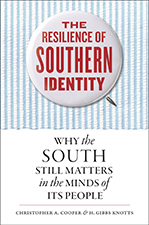 In the 2017 book titled “The Resilience of Southern Identity,” some of the same authors involved with the College of Charleston study found the region’s distinctiveness has a stronger grip than the small sample offered by daughters who make fun of their dad.
In the 2017 book titled “The Resilience of Southern Identity,” some of the same authors involved with the College of Charleston study found the region’s distinctiveness has a stronger grip than the small sample offered by daughters who make fun of their dad.
“If ‘the South’ as a concept were an easy idea to kill off, it would be long dead,” political scientists Christopher Cooper and Gibbs Knotts wrote. “Instead, Southern identity is resilient. It may change form, but if history is any guide, people will continue to search for distinctiveness and originality, even in the face of rapid change.”
So maybe the Southern accent isn’t fading as much as it’s just changing how it is manifest.
As a daughter ran to catch the school bus this week, she said, “Have a good meeting,” with the last word pronounced “MEET-n.”
Then she stopped, turned around, looked and said, “Oh no, it’s happening to me, too.”
Advantage, dad.
- Have a comment? Send to: charlestoncurrents@gmail.com
SPOTLIGHT: SCIWAY
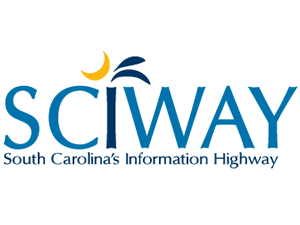 The public spiritedness of our underwriters allows us to bring Charleston Currents to you at no cost. Today we shine our spotlight on SCIWAY. Pronounced “sky-way,” SCIWAY is South Carolina’s Information Superhighway — the largest and most comprehensive directory of South Carolina information on the Internet. It includes thousands of links to other South Carolina Web sites, including Charleston Currents, as well as an amazing collection of maps, charts, articles, photos and other resources.
The public spiritedness of our underwriters allows us to bring Charleston Currents to you at no cost. Today we shine our spotlight on SCIWAY. Pronounced “sky-way,” SCIWAY is South Carolina’s Information Superhighway — the largest and most comprehensive directory of South Carolina information on the Internet. It includes thousands of links to other South Carolina Web sites, including Charleston Currents, as well as an amazing collection of maps, charts, articles, photos and other resources.
- To learn more about this extraordinary information hub that 7 million people visit a year, go to: http://www.SCIWAY.com.
GOOD NEWS: Input sought for future of West Ashley Bikeway, Greenway
Staff reports | The Charleston Parks Conservancy and the City of Charleston are inviting the public share ideas to improve the West Ashley Greenway and Bikeway at a series of interactive design workshops from June 4 to June 7 in West Ashley.
The Conservancy and the city are creating a detailed master plan and design for a combined 10.5-mile stretch of the Greenway and Bikeway. This West Ashley Greenway and Bikeway Community Design Workshop is a chance for area residents to share their suggestions and have a say in shaping the future of these public spaces.
“This is an exciting opportunity to be part of transforming a significant public space that connects so many neighborhoods in the City of Charleston,” said Harry Lesesne, executive director of the Charleston Parks Conservancy. “We’re looking forward to working with the public on ideas and inspiration as to how we can make the West Ashley Bikeway and Greenway even more inviting.”
Here is the workshop schedule:
- Kickoff and Community Design Forum, June 4, 6:30 p.m. to 8:30 p.m. The Schoolhouse, Large Community Auditorium at 720 Magnolia Roadin West Ashley
- Open Studio, June 5 and June 6, 10 a.m. – 6:30 p.m.(drop in anytime). Charleston Parks Conservancy, Studio Space at 720 Magnolia Road, Suite 25, in West Ashley
- Work-in-Progress Presentation and Feedback Forum, June 7, 6:30 p.m. to 8:30 p.m.The Schoolhouse, Large Community Auditorium at 720 Magnolia Road in West Ashley
The master plan should be completed by late summer or early fall, according to a press release. In partnership with the City of Charleston, the Conservancy will immediately begin seeking public and private funds to complete a prioritized list of improvements.
- For questions about the upcoming Community Input Workshop, call 843-724-5003 or email planning@charlestonparksconserorg.
- Have a comment? Send to: charlestoncurrents@gmail.com
WHAT WE LOVE: The ocean, white graduation dresses, everything
Longtime reader Irene Smith of Charleston offers a broad view of what she loves about the Lowcountry:
![]() “I love the ocean, being surrounded by water, boating, the history of the area. the charm of the city, the graduation dress at the College of Charleston — girls used to wear long white dresses — the museums.
“I love the ocean, being surrounded by water, boating, the history of the area. the charm of the city, the graduation dress at the College of Charleston — girls used to wear long white dresses — the museums.
“I love everything about Charleston. That is why we moved back here.”
Tell us what you love about the Lowcountry
Tell us what you love. Send a short comment – 50 words to 100 words – that describes something you really enjoy about the Lowcountry. It can be big or small. It can be a place, a thing or something you see. It might the bakery where you get a morning croissant or a business or government entity doing a good job. We’ll highlight your entry in a coming issue of Charleston Currents. We look forward to hearing from you.
FEEDBACKFEEDBACK: Send us your thoughts
We love hearing from readers. Comments are limited to 250 words or less. Please include your name and contact information. Send your letters to: charlestoncurrents@gmail.com. Read our feedback policy.
MYSTERYMYSTERY PHOTO: Rural and rustic
Here’s a rustic, rural-looking photo provided by a loyal reader and photographer. It’s in South Carolina, but where? Send your best guess – plus your name and hometown – to charlestoncurrents@gmail.com. In the subject line, write: “Mystery Photo guess.” (If you don’t include your contact information, we can’t give you credit!)
Last issue’s mystery
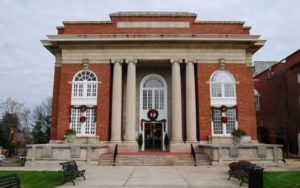 Before we identify the May 21 mystery, let us apologize to any of you who tried to send a guess for much of this week. Our email server has been down. We’ve worked diligently to fix the problem, but communications between readers and our site suffered greatly. We hope the problem is now fixed, but if you guessed and got a bounced email from us, we apologize. Thanks for trying.
Before we identify the May 21 mystery, let us apologize to any of you who tried to send a guess for much of this week. Our email server has been down. We’ve worked diligently to fix the problem, but communications between readers and our site suffered greatly. We hope the problem is now fixed, but if you guessed and got a bounced email from us, we apologize. Thanks for trying.
The photo was of the Abbeville County Courthouse in the town with the same name as the county.
Hats off to those whose identifications got through: George Graf of Palmyra, Va.; and Tom Tindall of Edisto Island.
Tindall, relying on information extracted from the S.C. Department of Archives and History, provided a little context:
“The mystery photo is of the Abbeville County Courthouse. It was constructed in 1908 to replace an earlier courthouse that was destroyed by fire and is one of six S.C. courthouses designed by Darlington native William Augustus Edwards.
“As with Edwards’ other courthouses, Abbeville incorporates heraldic devices and symbols of justice to emphasize the symbolic role of county government. The courthouse is a monumental two-story brick building located on Abbeville public square and is connected by a brick arcade to the adjacent Opera House and Municipal Office Building. The courthouse underwent restoration in 1964 and falls within the Abbeville Historic District. It was listed in the National Register on Oct. 30, 1981.”
Graf sent along more information about Abbeville:
“Abbeville was settled by French Huguenots and was named, along with the county, for the French town of the same name. Abbeville’s City Motto is “Pretty. Near. Perfect.”
“Abbeville has the unique distinction of being both the birthplace and the deathbed of the Confederacy. On Nov. 22, 1860, a meeting was held at Abbeville, at a site since dubbed “Secession Hill”, to launch South Carolina’s secession from the Union. It was on May 2, 1865, in the front parlor of what is now known as the Burt-Stark Mansion that Jefferson Davis officially acknowledged the dissolution of the Confederate government, in the last official cabinet meeting.
“Anthony Crawford (ca. 1865 – Oct. 21, 1916) was an African American man killed by a lynch mob in Abbeville. Crawford was co-founder of the Industrial Union of Abbeville County, which was devoted to the “material, moral and intellectual advance of the colored people.” He was the father of twelve sons and four daughters. He owned a 427-acre cotton field and was one of the richest men in Abbeville. He got into an argument over the price of cotton with a white store owner, then was struck on the head with an axe handle by the owner, and after being put in jail was later hanged by an angry white lynch mob.”
- Send us a mystery: If you have a photo that you believe will stump readers, send it along (but make sure to tell us what it is because it may stump us too!) Send it along to charlestoncurrents@gmail.com.
HISTORY: S.C. Medal of Honor recipients
S.C. Encyclopedia | Approved by the United States Congress in 1862, the Medal of Honor is America’s highest award for military valor. Thirty native South Carolinians have been awarded the medal for “conspicuous gallantry and intrepidity” above that of their comrades in arms. On rare occasions the Medal of Honor has been awarded for individual exploits taking place in peacetime. Among them is Shipfitter First Class George Huber Wheeler of Charleston, who received the award for extraordinary heroism during a fire at Coquimbo, Chile, on January 20, 1909.
The first South Carolinian to receive the award during military action was Ernest A. Garlington of Newberry, who earned the honor for “distinguished gallantry” against the Sioux Indians at the Battle of Wounded Knee on December 29, 1890. Early in the following century, naval surgeon Middleton Stuart Elliott of Beaufort and Commander William A. Moffett of Charleston each received the decoration during hostilities against Mexican forces at Vera Cruz in April 1914.
Eight South Carolinians were awarded the medal during World War I, including three who made the supreme sacrifice. Six recipients were members of the 118th Infantry, which received more Medals of Honor than any other regiment in the American Expeditionary Forces. Among them was Providence native Corporal James D. Heriot of the Thirtieth Division. Heriot made a lone thirty-yard dash against a German machine gun nest and forced the team to surrender, only to fall himself later that day. In 1991 the sisters of Corporal Freddie Stowers of Anderson County were presented a posthumous award for his extraordinary courage while attempting to destroy a machine gun that had pinned down his men during World War I. Stowers was the only African American from the war awarded the medal.
While serving in Nicaragua between the world wars, Marine Corporal Donald L. Truesdale of Lugoff saved the lives of the members of his patrol by shielding them from the shock of an errant grenade on April 24, 1932. During World War II five South Carolinians were awarded the medal for courage and self-sacrifice. Marine Sergeant Robert A. Owens of Greenville made a charge against a well-placed Japanese gun that was wreaking havoc on American landing operations in the Solomon Islands on November 1, 1943. His sacrifice silenced the gun and paved the way for a successful invasion.
During fighting in the Korean War, three of the four South Carolina recipients were presented the honor posthumously. The fourth, Marine Staff Sergeant Robert Sidney Kennemore of Greenville, miraculously survived the blast of a grenade on which he had thrown himself to protect his platoon. Seven native South Carolinians were awarded the Medal of Honor during American involvement in Vietnam. The last Medal of Honor action of the Vietnam War occurred on Halloween night 1972, when Greenville native Petty Officer First Class Michael Edwin Thornton saved the life of his team leader Lieutenant Thomas Norris. Thornton’s is the rare case of one Medal of Honor recipient receiving the award for saving the life of another recipient.
— Excerpted from an entry by Samuel K. Fore. To read more about this or 2,000 other entries about South Carolina, check out The South Carolina Encyclopedia, published in 2006 by USC Press. (Information used by permission.)
ON THE CALENDARCALENDAR, May 28+: Don’t miss events at Piccolo Spoleto and Spoleto Festival USA
![]() Staff reports | There are so many events still remaining at Piccolo Spoleto and Spoleto Festival USA that we’d kill too many electrons by going through them all. You can, however, click either of the links below to find all of the information you need to know.
Staff reports | There are so many events still remaining at Piccolo Spoleto and Spoleto Festival USA that we’d kill too many electrons by going through them all. You can, however, click either of the links below to find all of the information you need to know.
Also on the calendar:
Flags on display: Starting June 1, The Charleston Museum, 360 Meeting St., Charleston. “Unfurled: Flags from the Collection of the Charleston Museum” will feature rarely shown flags from the early 19th century to the late 20th century with a variety of functions. More.
Music Under the Oaks: 11 a.m. on June 2, July 7 and Aug. 4, Charles Pinckney National Historic Site, 1254 Long Point Road, Mount Pleasant. On June 2, NIA Productions will feature African drumming and dance; On July 4, the show will feature singer Ann Caldwell while the Plantation Singers will perform Aug. 4. Bring sunscreen and insect repellant.
Early morning bird walks at Caw Caw: 8:30 a.m. every Wednesday and Saturday, Caw Caw Interpretive Center, Ravenel. You can learn about habitats and birds, butterflies and other organisms in this two-hour session. Registration not required, but participants are to be 15 and up. $10 per person or free to Gold Pass holders. More: http://www.CharlestonCountyParks.com.
AREA FARMERS MARKETS
SATURDAYS: The Charleston Farmers Market, is back in action from 8 a.m. to 2 p.m. every Saturday through Nov. 24 at Marion Square. A holiday market will be open Dec. 1, 2, 8. 9, 15 and 16.
SATURDAYS: Johns Island Farmers Market operates each Saturday from 9:30 a.m. to 1:30 p.m. year-round with more than 50 local farmers and vendors, food trucks, music and more. The market is located on the campus of Charleston Collegiate School, 2024 Academy Road, Johns Island.
SATURDAYS: The Town Market on James Island are again open. Open 9 a.m. to 1 p.m. every Saturday at the James Island Youth Soccer Club, 871 Fort Johnson Road, James Island.
TUESDAYS: The Town of Mount Pleasant’s Farmers Market is every Tuesday from 3:30 p.m. to 7 p.m. in the market pavilion at Moultrie Middle School, 645 Coleman Blvd, in Mount Pleasant.
WEDNESDAYS. The West Ashley Farmers Market, 55 Sycamore Ave., is open every Wednesday from 3 p.m. to 7 p.m. in Ackerman Park. More.
- If you have an event to list on our calendar, please send it to charlestoncurrents@gmail.com for consideration. The calendar is updated weekly on Mondays.
OUR UNDERWRITERS
Charleston Currents is an underwriter-supported weekly online journal of good news about the Charleston area and Lowcountry of South Carolina.
- Meet our underwriters
- To learn more about how your organization or business can benefit, click here to contact us. Or give us a holler on the phone at: 843.670.3996.
OUR TEAM
Charleston Currents offers insightful community comment and good news on events each week. It cuts through the information clutter to offer the best of what’s happening locally.
- Mailing address: P.O. Box. 22261 | Charleston, SC 29413
- Phone: 670.3996
Charleston Currents is provided to you weekly by:
- Editor and publisher: Andy Brack, 843.670.3996
- Contributing photographer: Michael Kaynard
- Contributing editor, careers: Ben Fanning
- Contributing editor, common good, Fred Palm
- Contributing editor, money: Kyra Morris
- Contributing editor, Palmetto Poem: Marjory Wentworth
SUBSCRIBE FOR FREE
Subscriptions to Charleston Currents are free.
- Click here to subscribe.
- We don’t want to lose you as a reader of Charleston Currents, go to the bottom of any of your weekly newsletters and click the “unsubscribe” function. If that doesn’t work, please send us an email with the word “unsubscribe” in the subject line.
© 2008-2018, Statehouse Report, LLC. All rights reserved. Charleston Currents is published every Monday by Statehouse Report LLC, PO Box 22261, Charleston, SC 29413.



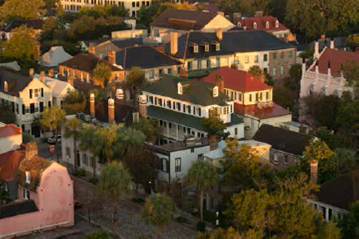
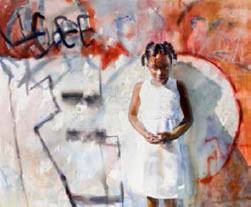
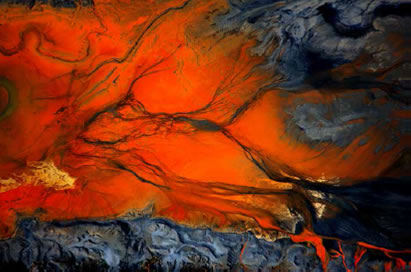

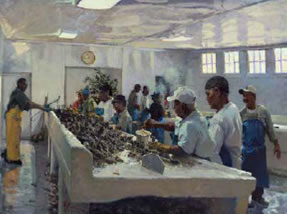


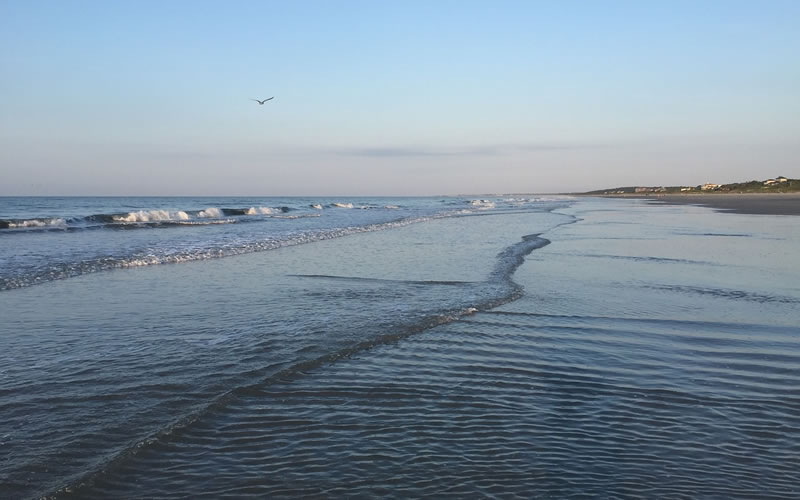
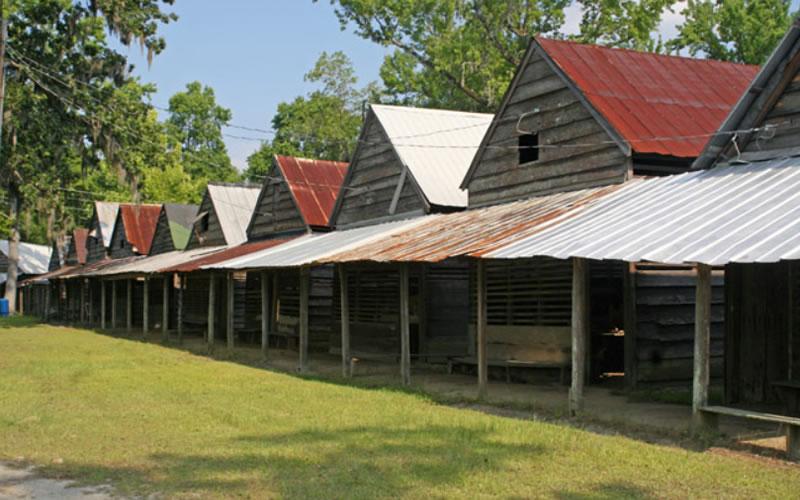


 We Can Do Better, South Carolina!
We Can Do Better, South Carolina!
























